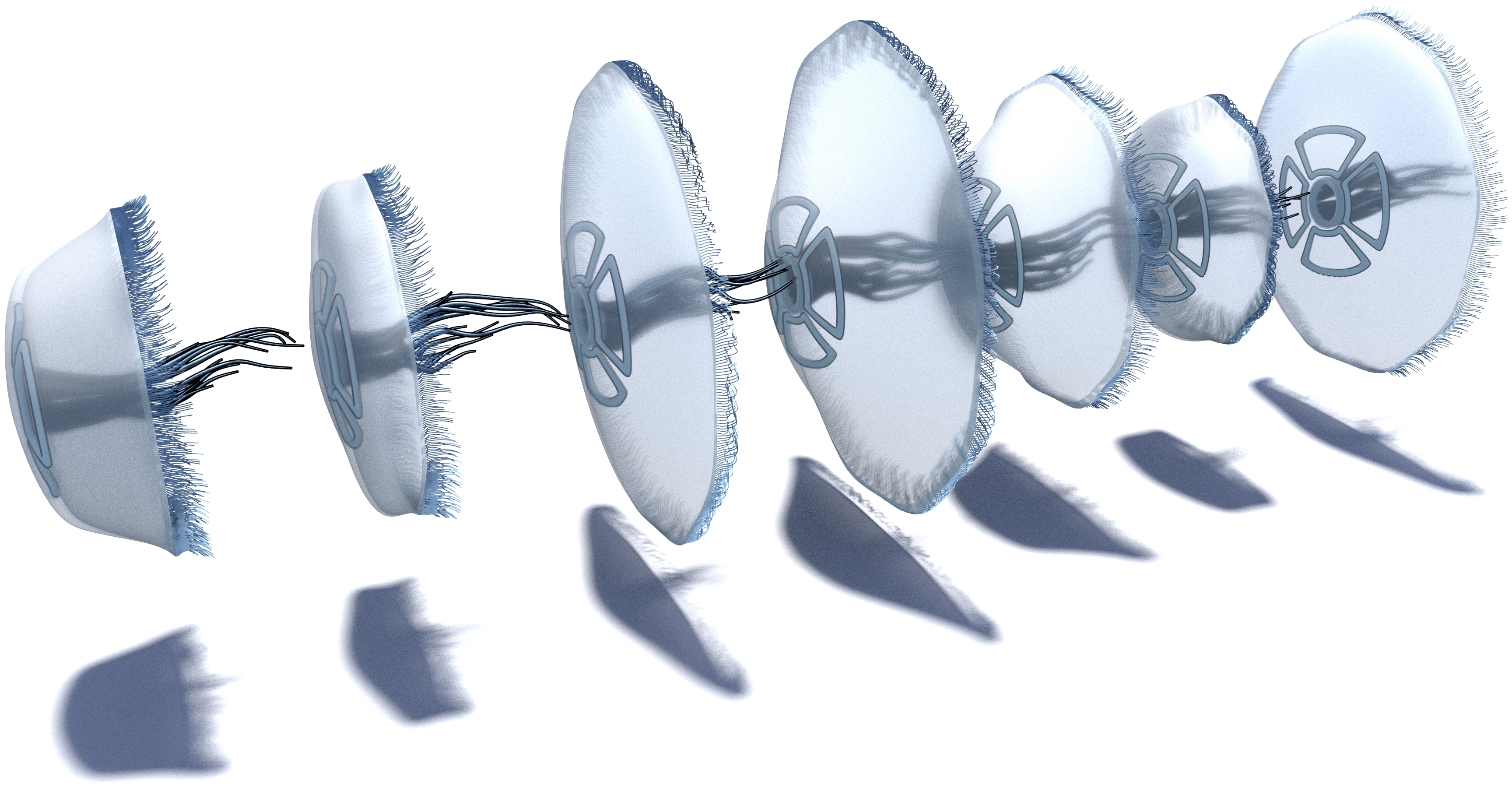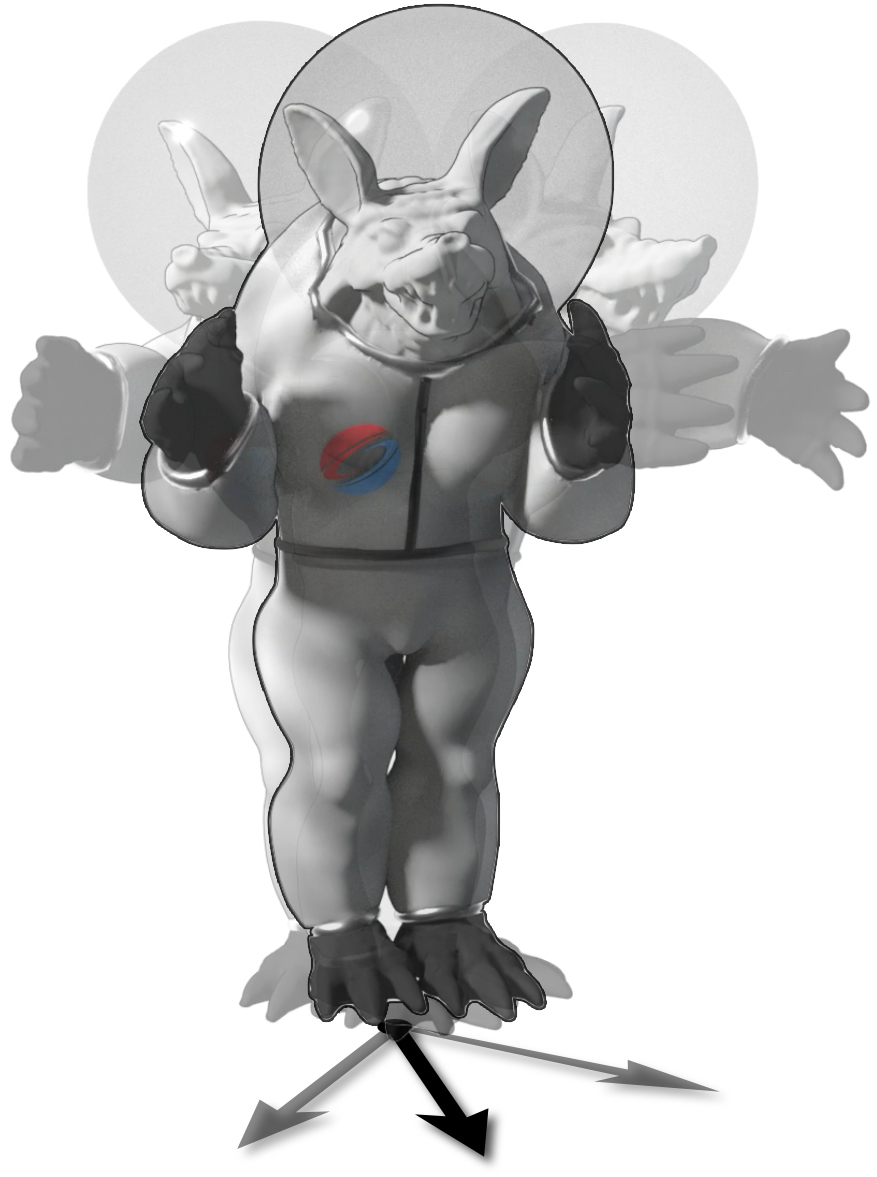
|
|
|
|
|
|
|
|
|
|

|
Abstract |
| We consider motion effected by shape change. Such motions are ubiquitous in nature and the human made environment, ranging from single cells to platform divers and jellyfish. The shapes may be immersed in various media ranging from the very viscous to air and nearly inviscid fluids. In the absence of external forces these settings are characterized by constant momentum. We exploit this in an algorithm which takes a sequence of changing shapes, say, as modeled by an animator, as input and produces corresponding motion in world coordinates. Our method is based on the geometry of shape change and an appropriate variational principle. The corresponding Euler-Lagrange equations are first order ODEs in the unknown rotations and translations and the resulting time stepping algorithm applies to all these settings without modification as we demonstrate with a broad set of examples. |
Resources |
|
 |
Motion From Shape Change Oliver Gross, Yousuf Soliman, Marcel Padilla, Felix Knöppel, Ulrich Pinkall and Peter Schröder ACM Trans. Graph. 42, 4, Article 107 (August 2023), 11 pages. DOI https://doi.org/10.1145/3592417 [Paper] [Poster] [Video] [Code] |
Video |
Acknowledgement |
| This work was supported in part by the DFG Collaborative Research Center TRR 109 "Discretization
in Geometry and Dynamics," the Caltech Center for Information Science and Technology, and the Einstein Foundation Berlin.
Additional support was provided by SideFX software. |